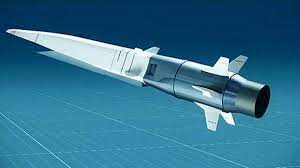Tsirkon Hypersonic Missile: Russia:

Russia has fired its Tsirkon (Zircon) Hypersonic Cruise Missile from a warship in the north of the country.
- Earlier, it was reported that China tested a nuclear-capable hypersonic glide vehicle that circled the globe before speeding towards its target.
- The Tsirkon Cruise Missile will join Avangard glide vehicles and the air-launched Kinzhal (Dagger) missiles in Russia’s hypersonic arsenal.
- Cruise missiles differ from ballistic missiles in that they fly towards their target at lower altitudes, remaining within the Earth’s atmosphere throughout their trajectory.
- It is one of the several missiles being developed in Russia that will arm up Russian submarines, frigates, and cruisers.
- Hypersonic Weapons are much harder to track and intercept than traditional projectiles because they can travel more than five times the speed of sound and maneuver in mid-flight.
Hypersonic Technology:
- Speed: 5 or more times the Mach or speed of sound.
- Mach Number: It describes an aircraft’s speed compared with the speed of sound in air, with Mach 1 equating to the speed of sound i.e. 343 metre per second.
- Technology Used: Most hypersonic vehicles primarily use the scramjet technology, which is a type of Air Breathing propulsion System.
- This is extremely complex technology, which also needs to be able to handle high temperatures, making the hypersonic systems extremely costly.
- Types:
- Hypersonic cruise missiles: These are the ones that use rocket or jet propellant through their flight and are regarded as being just faster versions of existing cruise missiles.
- Hypersonic Glide Vehicle (HGV): These missiles first go up into the atmosphere on a conventional rocket before being launched towards their target.




